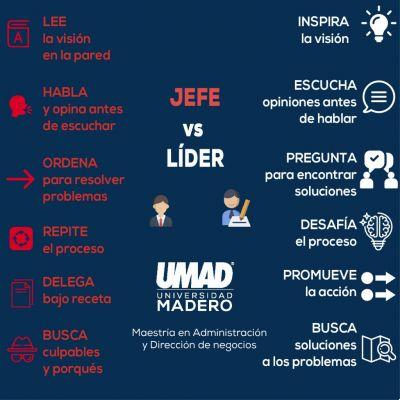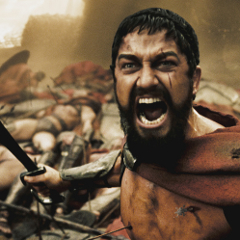When we are faced with a problem, we usually always adopt the same solutions, even if the results are not effective. Why do we do it? And most importantly, how can we stop doing it?

Last update: June 02, 2020
Problems are one of our biggest concerns. Living is not an easy experience, even less so when the natural difficulties that arise in everyday life come into play. But what happens when difficulties turn into unsolved problems?
Problems slow down and block evolution and prevent growth, especially when they remain unsolved; we end up living with them and everything begins to revolve around the despotism they exercise.
The transformation of difficulties into problems and their perpetuation is the result of unsuccessful attempts at solution. To this we must add the aggravating circumstance that even these attempts become a problem.
The more you try to solve a problem, the more you get the same result, the more the original problem takes root in the system. We are faced, apparently, with problems without solution.
Problems with no solution or simply not very creative solutions?
Attempts at resolution are a series of actions and interactions that aim to resolve the difficulty. These actions are the typical mechanisms used by the person when faced with an obstacle.
In general, human beings do not exploit their creativity and do not put it at the service of these attempts at solutions. Our conceptual frameworks governed by rational logic (and there are numerous opportunities in which logic is ineffective) have a very narrow repertoire, which does not favor variation in qualitative terms.
Conversely, we move better in the quantitative field: we tend to repeat the same strategy several times, even if the results do not point in the expected direction and we inevitably fail. The following examples are proof of this.
- Although the child continues to have difficulties with the study, the parents continue to turn to private teachers, with little or no results.
- The daughter does not want to eat and the mother insists by offering her plates full of food, thus generating greater aversion to food.
- The boss uses reprimand to point out an employee's inefficiency. This produces more tension and nervousness, which increases his low productivity at work.
- Parents order their son not to scream, yelling at him.
As we see, these problem-solving strategies generate self-fulfilling prophecies: we try so hard to avoid a problem that we end up causing it with our actions.
Why do we always repeat the same strategies when faced with problems without solution?
What are the reasons why we continue to apply the same formula despite its ineffectiveness? Why are solving attempts repeated and increased even if the opposite result is obtained?
The answers are in our mind, in the way we process information. The processes and mechanisms we use are based on:
- The search for causes: our thinking is based on the logic of why linear, cause-effect; in other words, every time we see a result, we try to explain why it happens.
- The explanatory principle: the tendency to explain ourselves in a one-way and simplistic way.
- The analytical method: we decompose the parts, analyze each one and add them together, in the illusion of grasping its essence and understanding the whole.
- Binary thinking: oscillates linearly between polarities (white / black, up / down, closed / open).
- Mathematical logic: we apply deductive logic to the resolution of emotional problems.
- Objective reality: to indefinitely support the research and conviction of a single reality, external to the eye, and believe that it can be observed objectively.
- The search for the single truth: understand that there is only one truth and that it must be revealed, in the illusion of solving the problem.
- Insight: to believe that discovering that external reality, that one truth, explaining and understanding it is the only possibility of solving problems without solution.
- Cognitive inertia: tendency to apply repetitive thought patterns and repeat cognitive processes of the "domino effect" type.
All these aspects are the basis of our way of dealing with problems, analyzing them and applying formulas to solve them. We all end up applying stored solutions and reiterating them.
This rigidity of mental schemes it constitutes our cognitive model, of which we are prisoners if we fail to exercise our creativity, pushing ourselves beyond the limits of our mental boundaries.
The left hemisphere, rational and logical, predominates in the analysis of the situation to find a probable solution. The right hemisphere, creative and more emotional, is relegated to the second row, when instead, it should be activated to the maximum.
Problems without solution? Thinking outside the box
The nine-point problem
It is a clear example of failed solution attempts. Nine points are placed (as indicated in the next figure) and the task is to cross them without lifting the pencil with four straight lines.
When we analyze the figure, after reading the task e looking at the nine points, it is impossible not to see the square. This is due to the Gestalt law of perception of proximity: a succession of points constitutes a straight line.
Now, we are trapped inside the grid, so the attempts at resolution will be limited to the perimeter of the square.
However, the illusion of that perimeter must be overcome in order to solve the problem. Because at the end of this it is: an illusion. The lines that we will draw for the solution of the proposal must go beyond the limits of the imaginary square.
The square we see is not only concrete, but is a metaphor of our conceptual framework, the rigid schemes that do not allow us to leave our information processing model.
From creativity comes the solution to our problems
To go beyond the perimeter of our model, we need to resort to creativity. If we make an association with the theory of the two hemispheres, the framing is our left hemisphere, rational, of mathematical calculation; while the right (the lines that go beyond the perimeter) is more emotional and is the one that indicates the path of creativity.
Our brain systematizes not only the contents, but also the processes, in particular the ways of processing information. On the other hand, we are so imbued with rational logic that we apply formulas based on it and we forget that human problems are mainly governed by emotions.
With this basis and honoring the phrase "Man is an animal that lives by habits", we apply the same formula over and over again despite getting the opposite result to the desired one. Meanwhile we put in doubt the results and not the premises that lead us to them.
When studying the reason behind the repetition of attempts at solution, as well as the systematization of mental operations, it is observed that some attempts offer momentary relief.
For example, a person feels distressed and naturally seeks the meaning of his sadness. He looks at the rainy and gray day, so he attributes the cause of his discomfort to the weather. Clearly, this conclusion does not transform her state, but that momentary justification gives her some peace of mind.
Many systems fail repeatedly
Attempts at resolution do not refer only to personal initiatives. A person is impregnated with a series of failed personal attempts and after spending years systematizing the same process, he has become more vulnerable and more dependent on his environment and resorts to this in search of answers that bring him closer to improvement.
This means that among the failed attempts in principle, there are also personal attempts. Among these attempts are what we may call mantras. For example: "It won't happen to me, it won't happen to me!", "Make it okay, make it okay!"
There are also professional attempts, in which we turn to different expert people to help us solve problems without solution.
Finally, there are attempts of people emotionally neighbors (neighbors, friends, family, etc.) che gives advice that is sometimes useless; that is, they motivate and push forward, but give ineffective answers or pity us for our unsolved problems.
Many of them harangue us, as if they were priests: "You can do it", but in addition to not finding a solution, we are trapped between the internal need that everything goes well and the external one that forces us to success. And this situation generates so much anxiety that it does not favor resolution.
Conclusion
If we persist with such inertia, there will be few problems to which we will find a solution. Perhaps this metaphor helps to clarify the concept: if we are in the middle of a football match, we feel we are losing, we lower our heads and watch the ball roll desperately, this is a negative formula. What to do then?
The recommendation is as follows: keep the ball under your feet, step on it, dominate it, brake it and raise your head to understand which direction to take, whether to continue running, whether to pass it to more experienced players or whether to shoot at goal ... Any option is valid, except sticking with the least effective solution.


























